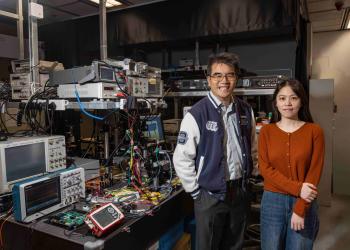News
Shedding Light on Materials Science Research
It turns out that light in the form of fluorescence has vital but hidden uses for the modern world. They make the invisible visible—including the detection of explosives in security screening, environmental monitoring, biological sensing and the detection and diagnosis in the spread of cancer cells. With high sensitivity, superb specificity and excellent stability, a new class of fluorogenic materials developed at HKUST with “aggregation-induced emission” characteristics have attracted worldwide attention from hospitals and biotech companies. How we commercialize these high-value-added materials is a matter of great urgency and importance.
The sharing can now be viewed here.
Sign Up for Our Latest News
Stay informed with the latest updates, events, and breakthroughs from HKUST.










